Returns are a huge problem for the retail industry.
In fact, retailers in the US and UK alone spend $339 billion per year fulfilling their liberal returns policy. Even more shocking: a study by Invest found that almost a third of all e-commerce purchases are returned – that’s more than three times the amount that is returned from purchases made in-store.
It’s clear that online retailers are missing the mark and as consumers move toward making more purchases online, it’s an issue that needs to be addressed.
There are many reasons why online shoppers return merchandise.
Maybe they were sent the wrong product or it was damaged or defective on arrival. However, the most common reason why customers return items is that the purchased products are not fit for their intended purpose or they simply change their mind once they’ve received it.
In a digital environment – where shoppers can’t feel, test, or try on products – they rely heavily on accurate and detailed product descriptions. But to reduce product return rates, online retailers must go much further than providing loads of content. They must find ways to instill confidence and assure shoppers that they are choosing a product that’s right for them.
This is where digital advisors come in.
Digital advisors emulate what professional and knowledgeable shop associates do in a store. Whenever they see that a shopper is unsure, they engage with them. They find out about their needs and preferences to guide them to the products that fit their needs.
Outfitter – a male-focused online personal shopper site – is a great example of a retailer utilizing digital advisors well.
Outfitter’s customer base consists of men who want to look good without making an effort in selecting their outfits. To help customers fulfill this goal, they use a digital advisor to discover the shopper’s style and preferences before recommending appropriate outfit suggestions.
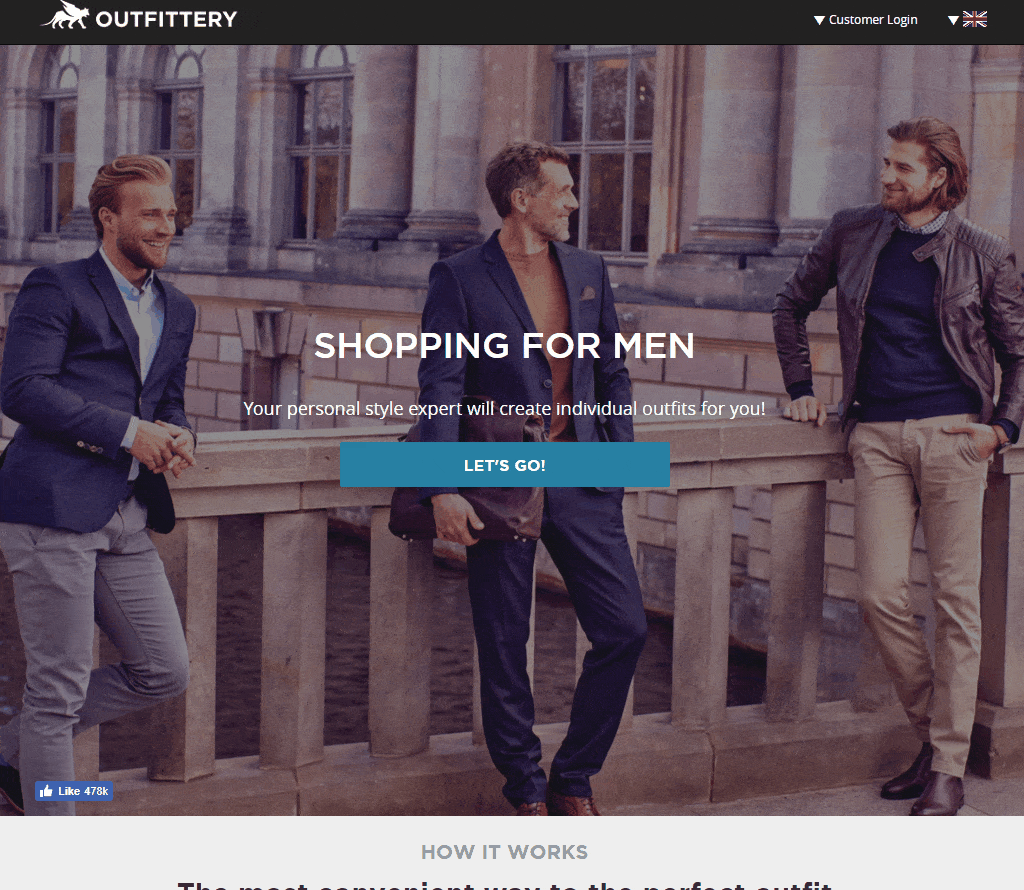
Outfittery – Shopping Advisor for Men
This needs-based approach provided by digital advisors can help online retailers reduce product return rates by up to 10% (source: SMARTASSISTANT)
So, let’s take a look at how and why digital advisors can create results like this.
How digital advisors help you reduce returns
1. Understand the shopper’s needs and act upon them
If you make an effort to understand a consumer’s needs and motivation for making a purchase, you stand a better chance of being able to help them discover the right products.
The North Face‘s digital advisor is an example of this. It asks open-ended questions such as “What activity will you use this jacket for?”, which allows users to narrow the jacket selection to find one that fits their specification.
It’s a sophisticated prototype of a digital advisor that is able to understand natural language thanks to AI. However, setting up and maintaining AI-powered solutions from scratch is still extremely expensive and time-consuming (and they don’t always yield the most perfect results).
Intelligent and well-designed quiz-like digital advisors can achieve similar experiences and results, provided the questionnaire flow is customer-oriented.
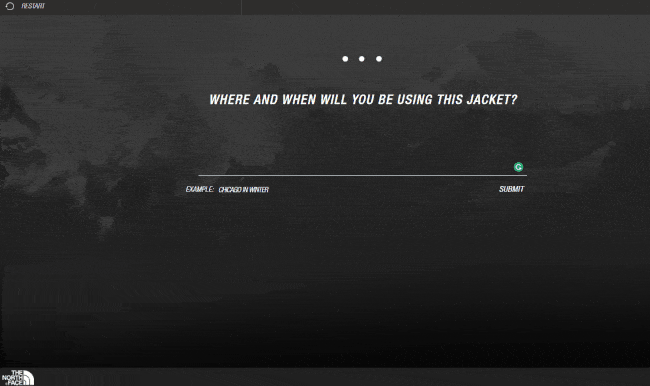
The North Face – Digital Jacket Advisor
2. Help them find the right size with ease
Customers are often unable to determine the correct size and measurements and end up making the wrong purchases.
According to BodyLabs’ “Solving the Fit Problem” study, 64% of clothing returns were the result of poor fit.
Some online retailers offer tools to help users find the right size and fit, but they’re often too complicated and require customers to know their specific measurements (something many shoppers don’t always have on hand).
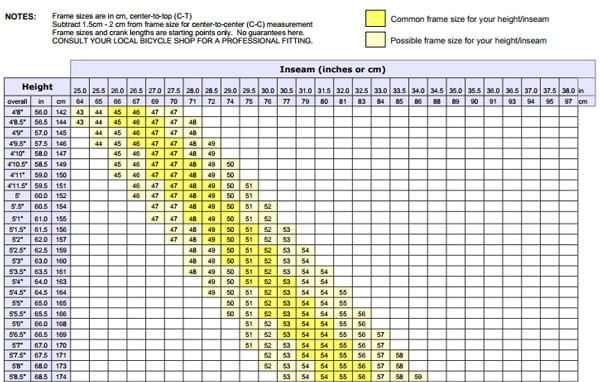
Example of a bike sizing chart
Using sizing charts like the example above requires considerable effort from the consumer. Making them work to find out their exact size will either encourage them to buy nothing at all or purchase items in different sizes knowing that they can return anything that doesn’t fit.
If online retailers want to reduce returns, they need to make the process of finding the right product easier than returning the wrong product.
Fits Me by Rakuten follows a more interactive approach where instead of the user having to input their measurements, Fits Me does it for them. All the user has to do is enter body data that they most likely already have memorized, such as height and weight. Fits Me will then advise them on the garment size that will fit best.
This guided approach is so effective that only 4.5% of all shoppers using the Fits Me tool returned their purchase. When compared to the 16% of customers who didn’t use the tool and returned their purchase, that’s a dramatic drop-off.
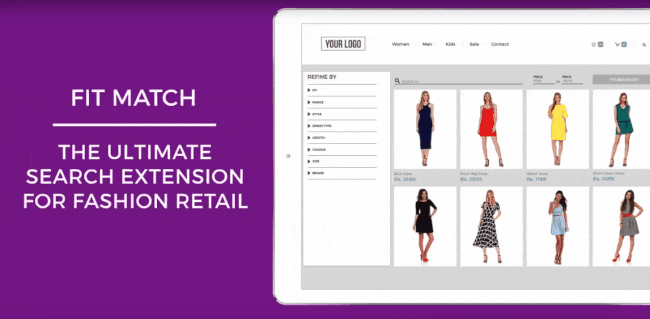
Image source courtesy of FitsMe.
3. Increase decision confidence through education
Educating shoppers on the distinctive capabilities of your products is essential to help them make the right decision.
If a consumer feels informed, they’re more likely to make a positive purchase decision. Which, in turn, reduces the chances of a return.
Digital advisors are a great way to incorporate customer education into the customer’s purchase decision journey.
Sports equipment brand Mizuno perfectly demonstrates how digital advisors can be used to educate shoppers. Mizuno’s baseball glove finder asks users questions such as “What position do you play?” and allows them to answer via an interactive graphic. Based on their selection, the digital advisor displays relevant information about what makes a glove perfect for their position.
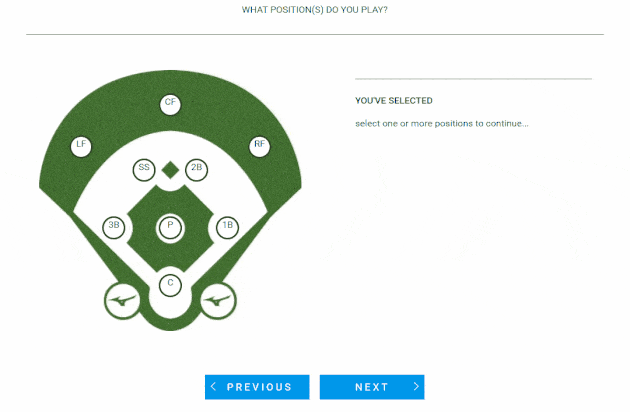
Mizuno – Digital Advisor – Shopper education
This personalized approach is both a valuable learning experience for the user and a way for Mizuno to build trust by demonstrating its expertise in this area.
4. Communicate more effectively – Imagery not words
Humans think in images, not words. When it comes to products, they sometimes have difficulties verbalizing their needs and preferences.
The Zaltman Metaphor Elicitation Technique is a way to uncover deeply held, often subconscious thoughts and feelings through visual images. Zelman said:
“A lot goes on in our minds that we’re not aware of. Most of what influences what we say and do occurs below the level of awareness. That’s why we need new techniques: to get at hidden knowledge – to get at what people don’t know they know.”
Digital advisors can be used to implement this technique by giving the user a diverse selection of images and letting them choose which they feel best represents their personality, wants, and needs.
Otto, the large German retailer, created a digital Fashion style advisor that features a strong visual experience based on the ZMET methodology. It shows images that represent different aspects of aesthetics that are not solely related to clothing selections, such as furniture and drinks.
The advisor taps into a user’s emotions and asks them to select the image that appeals to them the most. This captures their tastes and preferences in ways words would never be able to.
An intelligent matching engine in the background analyzes their choices and suggests outfit combinations based on identified style preferences.
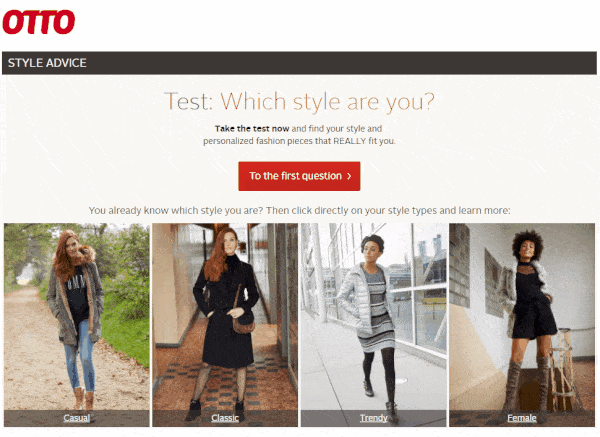
OTTO Style Advisor
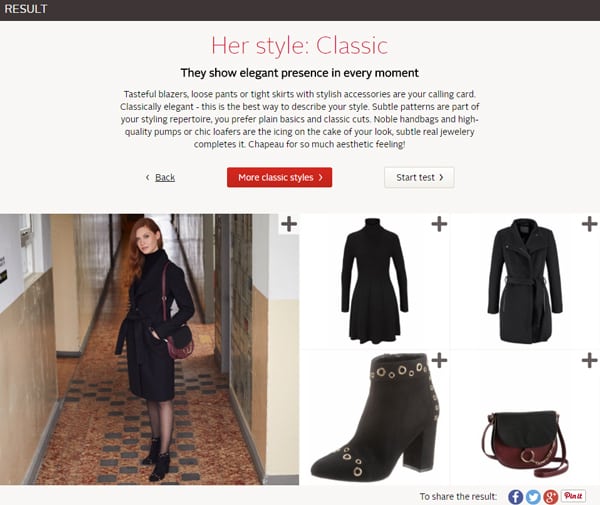
OTTO Style Advisor result page
Here’s another example of a digital advisor by Otto that uses images to understand preferences: Living style advisor

OTTO – Mobile Living Style Matcher
5. Reduce uncertainty by explaining recommendations
Designing a great advisor that pinpoints a user’s needs and makes accurate recommendations is only the first step in reducing indecision and return rates.
The next, even more crucial step involves proving that your product recommendations relate to the user’s needs by explaining why you’ve suggested certain products.
By highlighting the characteristics that make a product the ideal fit for a customer, you add greater weight to the recommendation. Seeing how a product relates to their expressed needs makes your customers feel listened to, understood, and adequately advised.
One incredibly fitting advisor example is one already visited in this article: The Mizuno’s baseball glove finder. In this experience, Mizuno makes an active effort to show the user how the recommendations relate to their answers. This re-affirms how each glove meets their needs and gives users the certainty that the recommended products are suited specifically for their intended purpose.
Digital advisors like these lead to lower return rates because users know with confidence not only that the product they’ve been recommended is the best match, but also why.
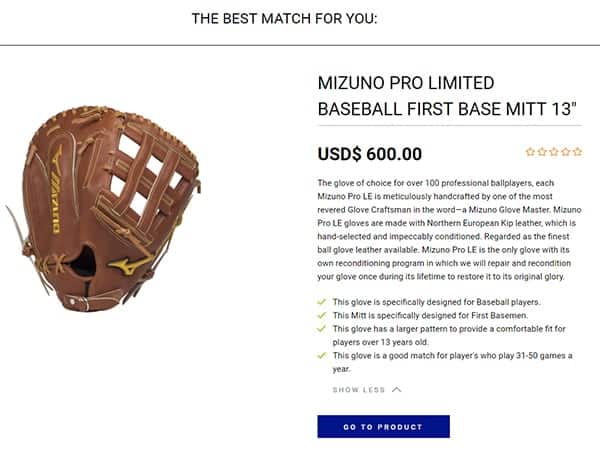
Mizuno Baseball glove advisor – Recommendation explained
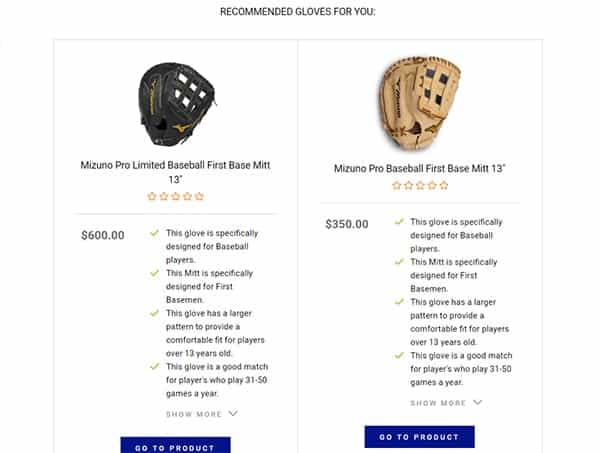
Mizuno Baseball glove advisor – Alternative Recommendation explained
A closing recap
Decreasing return rates is a challenge most online retailers face – and one that most will admit they need to address. Recognizing it as a problem is one thing, applying effective measures to do something about it is another.
Digital advisors are proven to reduce return rates by matching consumers with the right products. They go above and beyond the usual shopping experience, offering customers the education they need to purchase products with greater confidence.
All in all, digital advisors give you the opportunity to:
- Understand what your customer truly needs and give them exactly that
- Help consumers find the right size by using fluid, interactive sizing advisors instead of static sizing guides
- Use your advisor experience as a means to educate shoppers
- Create a compelling visual experience for greater accuracy in understanding their needs
- Explain how and why specific recommendations were made
And naturally, if you want to learn more how you can get started with your return rates remedy, we are always happy to help.




